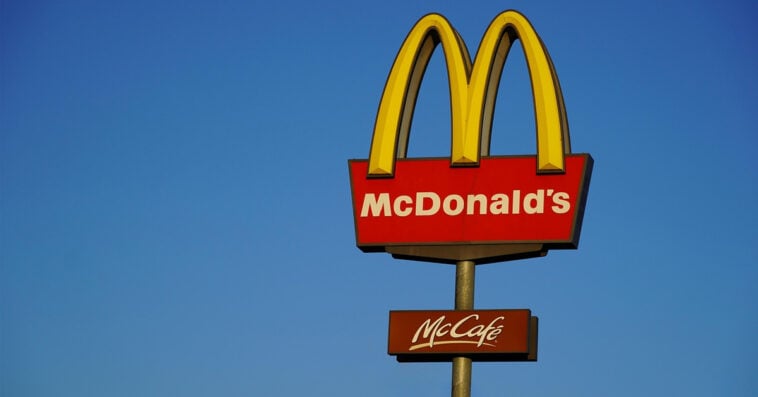In today’s economy, every dollar counts — and McDonald’s has taken notice. It’s been almost a month since the fast-food giant reintroduced its beloved Extra Value Meals, giving Americans a tasty way to save money without sacrificing the flavors they love. These bundles, which feature classic favorites and deliver meaningful savings, are making a big difference for budget-conscious diners. But just how much can customers really save with these wallet-friendly deals — and what does their return signal for the fast-food industry as a whole? The answers may surprise you.
How McDonald’s new deals can save you hundreds
McDonald’s has once again leaned into affordability with the return of its Extra Value Meals, a move designed to appeal to price-conscious diners. Rolled out on September 8, the revamped menu bundles together an entrée, fries, and a drink, trimming costs by about 15% compared with buying each item separately. For households tightening their belts, those savings can add up — especially at a time when many families are still struggling to balance rising expenses.
While a 15% discount might not sound significant on a single meal, the savings can quickly add up. According to Moneywise, if an average American household spent $3,933 on dining out in 2023, a consistent 15% discount could result in nearly $600 in savings per year. For lower-income families, this amount could be a meaningful buffer against rising costs, helping them stretch their budgets further.
To celebrate the return of the value-focused menu, McDonald’s initially launched two limited-time offers: a $5 Sausage McMuffin® with Egg meal for breakfast and an $8 Big Mac® meal for lunch. Following this initial rollout, the fast-food giant expanded its offerings with eight permanent Extra Value Meal options, covering breakfast, lunch, and dinner. Customers can now mix and match from a variety of popular choices, including:
- Sausage McMuffin with Egg
- Sausage Egg & Cheese McGriddles®
- Egg McMuffin®
- Bacon, Egg and Cheese Biscuit®
- Big Mac
- 10-piece Chicken McNuggets®
- Any Quarter Pounder® burger (Original, Bacon, or Deluxe)
- Any McCrispy® Sandwich (Original, Deluxe, or Spicy Deluxe)
With these new bundles, McDonald’s is not only offering a wider variety of choices but also reinforcing its legacy as an accessible, go-to destination for affordable food.
McDonald’s value push highlights America’s two-tier economy
The decision by McDonald’s to bring back its Extra Value Meals is more than just a marketing move; it’s a direct response to a fundamental shift in the American economy. While these new bundles offer a much-needed break for customers’ wallets, they also highlight a stark economic reality that McDonald’s CEO Chris Kempczinski refers to as a “two-tier economy.” This divide separates free-spending, upper-income households from lower- and middle-income consumers who are tightening their belts in the face of persistent inflation.
This “tale of two different households,” as Mark Zandi, chief economist at Moody’s Analytics, explains, is evident in spending patterns across the nation. The wealthiest 10% of Americans are spending at record rates, accounting for half of all consumer spending by early 2025. In contrast, middle- and lower-income families are actively cutting back. Companies like Chipotle Mexican Grill have noted this trend, with the brand cutting its annual sales forecast after finding that higher menu prices were deterring customers. Analysts with the UBS financial group acknowledge that many dining brands are operating in a “difficult macro environment in which consumers are managing visits,” a clear sign that consumers are becoming more selective about where they spend their money.
Why this matters: The bigger economic picture
This growing economic divide raises serious concerns for the broader economy. While the two-tier dynamic is most visible in the dining industry, its effects are spreading far beyond restaurants, creating a troubling outlook for the nation. This situation underscores a significant shift in consumer behavior, where affordability is becoming the most crucial factor in a wider range of purchasing decisions.
The financial reality for Americans is starkly different depending on their income level. The wealthiest 10% of Americans own roughly two-thirds of the nation’s wealth, including 87% of the value of stocks and mutual funds, according to the Federal Reserve. Meanwhile, the bottom 50% of the population holds just 2% of the nation’s wealth. This disparity is further highlighted by the stock market’s performance, as the S&P 500, NASDAQ, and Dow were all at or near record levels as of mid-September, providing enormous returns to the wealthiest investors.
This wealth concentration creates a ripple effect of financial stress on working-class families. While the stock market soars, the unemployment rate is at its highest point since 2021, directly impacting lower-income workers. This combination of unemployment and inflation is a major reason why low-income consumers are struggling with record levels of credit card debt. The Federal Reserve Bank of St. Louis reports that credit card delinquencies reached their highest levels in 25 years in Q1 2025, with the poorest 10% of Americans having the highest delinquency rates.
For now, wealthier Americans are largely shielded from this financial stress, but that could change. As Morning Consult Chief Economist John Leer told CNBC, if the job market’s weakness persists, this financial pressure could eventually “trickle up” to higher-income consumers. If that happens, even more Americans might find themselves seeking out a deal on a Big Mac and fries.

